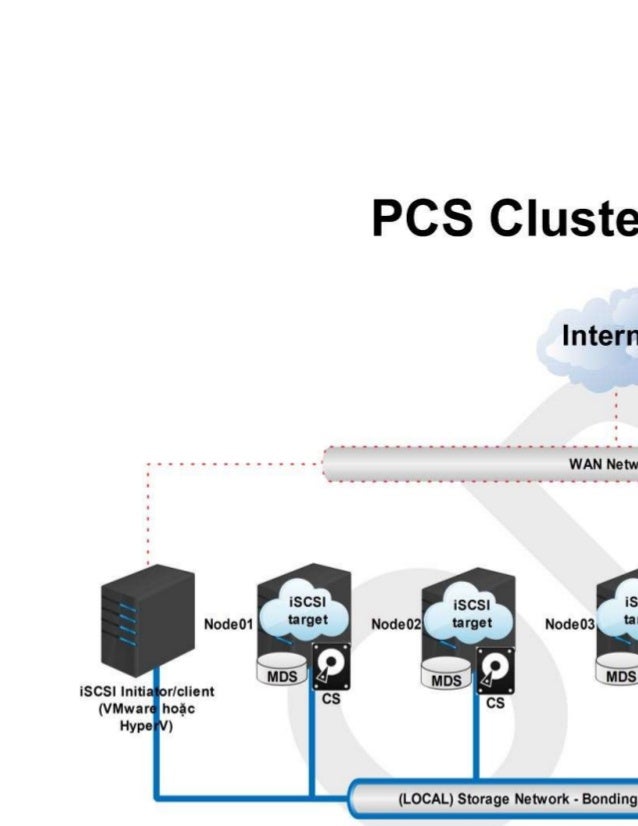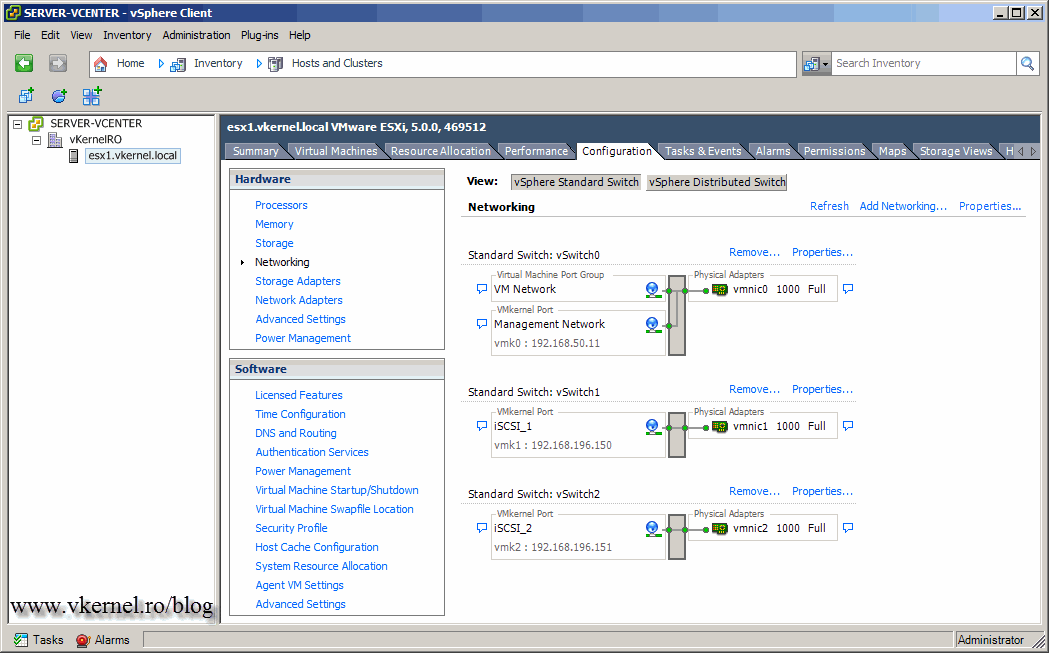
- #ADD ISCSI TO VMWARE ESXI 5 HOW TO#
- #ADD ISCSI TO VMWARE ESXI 5 INSTALL#
- #ADD ISCSI TO VMWARE ESXI 5 UPGRADE#
- #ADD ISCSI TO VMWARE ESXI 5 SOFTWARE#
- #ADD ISCSI TO VMWARE ESXI 5 MAC#
#ADD ISCSI TO VMWARE ESXI 5 INSTALL#
Pausing the Virtual Machines while the StarWind VSAN service in under load may lead to split-brain issues in synchronous replication devices, thus to data corruption.ġ. Download the StarWind setup executable file from the StarWind website:Ģ. Launch the downloaded setup file on the server to install StarWind Virtual SAN or one of its components. NOTE: When using StarWind with the synchronous replication feature inside of a Virtual Machine, it is recommended not to make backups and/or snapshots of the Virtual Machine with the StarWind VSAN service installed, as this could pause the StarWind Virtual Machine.
#ADD ISCSI TO VMWARE ESXI 5 MAC#
NOTE: The Active Directory Domain Services role can be added on StarWind Virtual Mac hine (VM) if necessary, thus it can serve as a domain controller.
#ADD ISCSI TO VMWARE ESXI 5 HOW TO#
Follow the instructions in the section below on how to add RAID controller as PCI device to StarWind VM. In this case RAID volume will be available as a virtual disk in the Drives section in the Web console. The link to VMware documentation is below:Īlso, if a separate RAID controller is available, it can be used as dedicated storage for StarWind VM, and RAID controller can be added to StarWind VM as a PCI device. NOTE: Alternatively, the disk can be added to StarWind VSAN VM as RDM. Hard disk 2: Depends on the storage volume to be used as shared storage – Thick Provisioned Eager Zeroed.

Hard disk 1: 100 GB for OS (recommended) – Thick Provisioned Eager Zeroed. Network adapter for Management should be of the E1000 type. NOTE: Network adapters for iSCSI and Sync should be of the VMXNET3 type. RAM: at least 4 GB (plus the size of the RAM cache if it is planned to be used) reserved for the VM ĬPUs: at least 4 virtual processors with 2 GHz reserved StarWind VMs on ESXi hosts should be configured with the following settings: Repeat steps 1-3 for any other links intended for Synchronization and iSCSI/Heartbeat traffic on ESXi hosts.Ĭreate Virtual Machines (VMs) on each ESXi host with supported Windows Server OS for StarWind VSAN (see system requirements: ) and further StarWind VSAN installation. Add a Virtual Machine Port Groups on the vSwitch for iSCSI traffic (vSwtich1) and on the vSwitch for Synchronization traffic (vSwitch2).Ĥ. Create a VMKernel port for the iSCSI/ StarWind Heartbeat channel.ģ. Using VMware ESXi web console, create two standard vSwitches: one for the iSCSI/ StarWind Heartbeat channel (vSwitch1) and the other one for the Synchronization channel (vSwitch2).Ģ. Additionally, vMotion can be enabled on VMKernel ports.ġ. NOTE: It is recommended to set MTU to 9000 on vSwitches and VMKernel ports for iSCSI and Synchronization traffic. Static IP addresses should be assigned to VMKernel ports. VMKernel port should be created only for iSCSI traffic. NOTE: Virtual Machine Port Group should be created for both iSCSI/ StarWind Heartbeat and the Synchronization vSwitches. All actions below should be applied to each ESXi server. Hyperconverged Appliance from StarWind HCA DatasheetĬonfigure network interfaces on each node to make sure that Synchronization and iSCSI/StarWind heartbeat interfaces are in different subnets and connected physically according to the network diagram above. We’ll also migrate your workloads at no extra cost.ĭramatically decrease your CapEx, OpEx, and IT management costs, while visibly increasing return on investment (ROI) with hyperconvergence for ROBO, SMB & Edge from StarWind. Everything’s operated through a neat web UI. All your systems will be “babysitted” by StarWind 24/7/365, troubleshooting any concerns without your involvement.

#ADD ISCSI TO VMWARE ESXI 5 UPGRADE#
You don’t need anything else to build a budget-friendly new IT infrastructure or upgrade an existing one. StarWind HyperConverged Appliance is a turnkey hyper-converged hardware platform fitted into a small two-node footprint. Synchronization and iSCSI/Heartbeat links and can be connected either via redundant switches or directly between the nodes. NOTE: Do not use ISCSI/Heartbeat and Synchronization channels over the same physical link. Here, the 172.16.10.x subnet is used for the iSCSI/StarWind heartbeat traffic, while the 172.16.20.x subnet is used for the Synchronization traffic. The network interfaces on each node for Synchronization and iSCSI/StarWind heartbeat interfaces should be in different subnets and connected directly according to the network diagram above. StarWind VSAN should be installed on the Windows Server operating system deployed as VM on each host.ģ. ESXi hypervisor should be installed on each host.Ģ. The diagram below illustrates the network and storage configuration of the solution.ġ.
#ADD ISCSI TO VMWARE ESXI 5 SOFTWARE#
Software as a Service (SaaS) & Financing.StarWind Virtual Tape Library Appliance (VTLA).


 0 kommentar(er)
0 kommentar(er)
